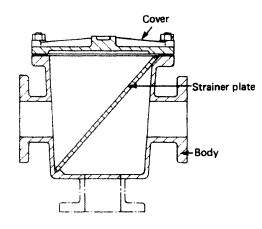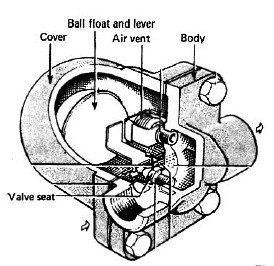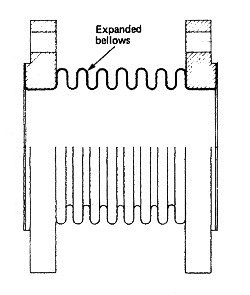
Piping systems for cargo ship's machinery spaces
A ship's machinery space contains hundreds of metres of piping and
fittings. The various systems are arranged to carry many different
liquids at various temperatures and pressures. The influences of
operational and safety requirements, as well as legislation, result in
somewhat complicated arrangements of what are a few basic fittings.
Valves, strainers, branch pipes, etc., are examples of fittings which are
found in a pipe system.



 Fig:Steam trap
Fig:Steam trap Fig:An Expansion bellows piece
Fig:An Expansion bellows piece